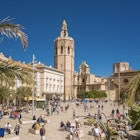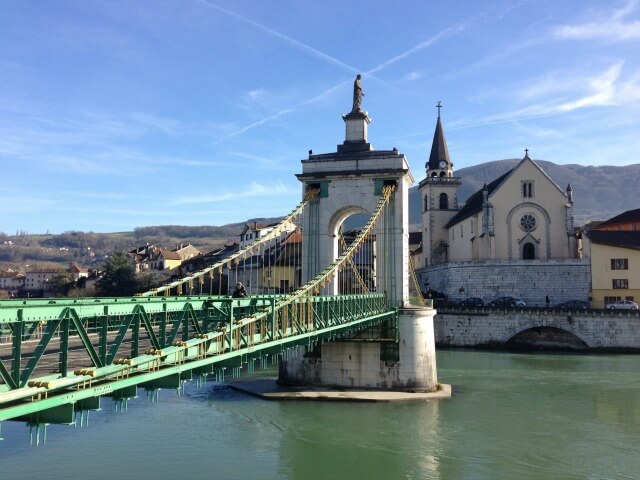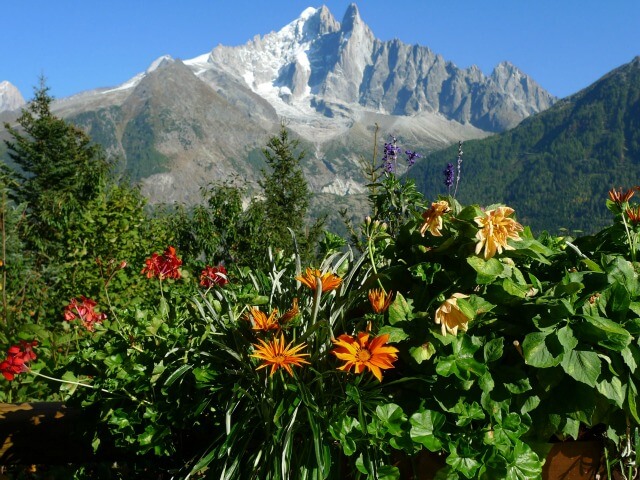7 years walking the world: what the ultimate slow travel trip taught me about life
Aug 2, 2023 • 5 min read

Taking seven years to walk 28,000 miles all over the planet was the ultimate in slow travel © Thomas Turcich
Inspired to live life more fully following the death of a friend, New Jersey native Tom Turcich, set himself a goal to see and experience the world on foot.
After finishing college and saving enough money, Turcich, with his dog Savannah by his side, embarked on a seven-year trip, visiting 38 countries. Now living in Kentucky , he shared with Lonely Planet’s Sara Stewart his philosophy of travel and lessons learned on the road.

Every experience is part of the adventure
I wanted to be forced into adventure, because I was timid and introverted. And I wanted a slow way of traveling. It came down to knowing what I wanted out of this very limited time I have here. If your goal is to discover the world, you’re willing to do that – even if you never get a hotel room, even if you’re eating peanut butter and jelly every day. That’s part of the adventure.
I knew that by walking that I couldn’t skip over anywhere. If I had been on a bike, if someone told me, “Hey, the town up ahead is dangerous,” I could fly through it. And I didn’t want that option. I wanted to see how the world actually was.
Everywhere you go, it’s just people living. You have this image in your head of what a place is like – and then when you get there you go, Oh, this is just like anywhere else, except the food changes . The world is made up of people trying to make a living, hanging out with their friends. People warned me about some places like El Salvador and Honduras – and those are, objectively, more dangerous places than other parts of the world. But when you think about any neighborhood, there’s kids going to school, there’s people walking to work. You’re just a stranger walking through a place where other people walk as well.

In Colombia , in particular, the older generation was scarred from La Violencia, that 50-year period of political violence. And so every town I would get to, people would tell me, “Be careful about the next town, it’s dangerous!” And when I would get to the next town, it was like, “Be careful about the next town!” But if you talked to the younger generation, they didn’t have any of that. It was only the older generation who rememberd.
Where to go in every town in every country
When I would get to a town, I would head to the square. Literally every other country does this except for the USA . It’s a place in your town that you wander over to because you have nothing else going on. It’s a good way to seek out culture and life, especially at midday and after sundown. The value of it, really, is happiness and community and sharing ideas and having a place to let kids ride circles around on their bikes, and for teenagers to hang out and have strange conversations.
In Argentina , when it was particularly hot, I needed a place to sit in the shade for a few hours. So I stop in a square, and I find this tree to lie under for a bit. I wander over to a restaurant, and this guy comes over and asks, “Hey, you want to come over and have lunch with my family?” I get invited inside, and we have this great time and share coffee together, and they make spaghetti and meatballs.
Why slow travel is the only way to travel
I now have a real appreciation for the benefits of inefficiency. Our obsession with efficiency is so stupid. You think you’re getting somewhere quicker, and then you come back and sit on your ass. You sit on the sofa and go, Whoa, I got to the supermarket really fast . And burned a bunch of gasoline on the way there. If you travel slowly, you realize how enjoyable it is to exist out in the world. It’s the same benefit of the public square: you’re in the world, you’re bumping into it, you’re having chance encounters, the wind feels nice, the birds are singing. You’re going to have time in your day that you can burn. You are not a perfect efficiency machine. Spain ’s very relaxed in that way. I think it comes in cultures that are older. North Africa was similar, especially Morocco and Algeria . Turkey is pretty mellow as well.

[The Republic of] Georgia is amazing. So vibrant and free. It’s a young democracy, but it has a really rich culture. You can just feel the want for democracy, the ideas – especially when compared to the neighboring Azerbaijan dictatorship. They have great art, great food, the conversations are great. The architecture is beautiful.
Preparing for a trip walking the world
Before starting, I walked two days up to my college, for practice, and that was like 60 miles. A lot of blisters! If you want to try out a two-day trip, camp in some strange patch of woods, it makes for more of an adventure. Maybe try a search on Google Maps, find a place that’s 20 miles from you. You probably need two liters of water a day. The USA has a lot of roads. You can find back roads that are quiet, especially in the middle of the country. Ohio , the Great Plains . If you’re doing two days, you can just take a backpack. I don’t think I would wear hiking boots. Your ankles get stronger when you don’t have that support, and you’re a little more nimble. Definitely wear wool socks.

America is territorial in a way that is rare in the world. A lot of land is fenced off, and people have their guns and are protective. So you want to be mindful of that. You don’t want to be a fool. But people are very nice everywhere. I think walking across the US is a great way to see the country, and get a sense of just how big and beautiful it is. When I was out West , it just blew my mind.
Explore related stories

Oct 11, 2024 • 5 min read
New Mexico has been enchanting visitors for centuries. Here are 10 of the best places for getting to know this marvelous state.

Oct 6, 2024 • 6 min read

Oct 6, 2024 • 4 min read

Oct 5, 2024 • 9 min read

Oct 5, 2024 • 6 min read

Oct 3, 2024 • 6 min read

Oct 3, 2024 • 5 min read

Oct 3, 2024 • 7 min read

Oct 2, 2024 • 7 min read

Oct 1, 2024 • 6 min read

Travel On Foot: The Ultimate Slow Travel
Travel on foot – it’s called different things in different countries: walking, trekking, tramping, rambling, hiking, bushwalking, bushbashing…
It’s the ultimate slow travel , taking your time to get from one place to the next, as close to the ground and to people as you possibly can.
Travel on foot more than just sport: walking is about proximity, intensity and experience . Rather than seeing as much as possible, it’s about going as deeply as possible. I’ve done short hikes and treks but someday I’ll walk all the way to a destination. I happen to live right on the Camino de Santiago, the bit that starts in Geneva and ends in… Santiago.

HOW TO GO FOR A WALK
Yes, of course, one foot in front of the other. That’s how I used to walk until I learned to WALK. To get the most of the experience takes a bit more than feet:
- Look at the details around you. Can you remember what you just walked by? What tree that was? Whether the ground was pebbly or rocky? What the streets are called?
- Use your senses as you walk. Can you smell the flowers, the asphalt, the fumes? Not every walk is going to be lovely. Can you hear birds in the trees or branches swaying in the wind?
- What is the weather like? Are you hot, cold, blowing in the wind?
- If you’re not in your own country, are there signs? What do they say? Are the shops different from those you know? How are people dressed?
- Can you tell anything about their culture from the way they walk with someone? Or their hand gestures? The volume of their voice or the amount of personal space they leave when they’re talking to someone? Are the church bells in the background or a muezzin? So people smile and greet one another or do they ignore them and walk by?
- Can you stop in a café and listen to conversations? Do you understand them? What are they about? Are most people in couples, in groups, alone? Are they writing, or reading, or simply gazing at other people?
- What about your body? Are you feeling unusual muscles begin to get grumpy? Are you out of breath or breathing more deeply than usual?
- Are you on a short walk or long hike, and how could you shorten or lengthen it if you wanted to?
I could go on… the point is that travel on foot is anything but just walking. Walking is involved but almost peripherally. To me, it’s about discovering a place the way it lives.
ARE THERE ANY ADVANTAGES TO THIS… WALKING THING?
Yes, of course, or why bother?
- walking is ideal if you have little time – think city walking tour or hike over a mountain but it can be as short or as long as you wish
- it’s sustainable and environmentally friendly – it’s hard to pollute when you’re walking (especially if you pick up after yourself)
- it keeps you fit, de-stressed and serene
- it allows you to soak up the culture – you can experience a place with all your senses, not just see it
- it puts you in touch with nature
- it allows you to meet local people along the way and see what they see
- it brings you close to the tastes, smells and sounds of your destination (see above)
- it lets you stop wherever you want and progress at your own pace
- it’s free!
IF YOU’RE GOING BEYOND THE CITY
Here are a few basic rules to help you stay safe when you travel on foot, especially if there are no crowds around:
- always wear something bright enough to be seen
- let someone know where you’re going, and when you expect to arrive
- if you’re heading somewhere isolated, try to team up with other hikers (why not look for a travel companion ?)
- if you’re going beyond a single city, check online for updates (I like to check travel forums ) – you don’t want to hike to another city in the middle of a flood
- depending on how far you’re going, carry a good map/GPS/personal locator beacon and any phone apps liable to help you find your way
- bring along plenty of water and food – and possibly a walking stick to help you walk and to ward off snakes and wild dogs (just in case) or slippery autumn leaves.
While going on foot from one place to the next has plenty going for it, there are some downsides… especially if you’re on a longer walk or a hike.
- you’ll see less than someone whizzing by on motorized transport – you can only walk so fast and so far, after all
- this kind of travel requires more time so you’ll have to be circumspect about your itinerary if you don’t have much travel time
- you may spend a lot of time dirty, sweaty and tired, and there may be no shower in sight
- it can be physically demanding so your health and fitness are factors
- your hiking equipment will wear out faster
- in some places distances can be huge and walking nearly impossible as a result
- it can be dangerous, in countries with conflict, disaster, extreme poverty or a high crime rate.
Despite these constraints, travel on foot remains a viable alternative . I’d love to do more of it – the best I’ve managed so far is to walk over a mountain from one town in Central America to another, and a trek across a mountain in northern Uganda. Both are still memorable, years later.

— Originally published on 31 July 2011
If you liked this post, please share it!


Home → Travel
Traveling by foot: good reasons to do it and tips.
What if for your trip you were to experience the journey on foot? It is indeed possible to discover an unknown land only by walking along paths that are accessible on foot, equipped or not, to see things differently and not to depend on anything. So ready to set off on an adventure, you will find in this article some good reasons and tips to get started.
Good reasons to travel by foot
1) saving money.
Living on the road forces you to review your relationship with money. Once you’ve walked through the door of your 4-star palace, you’ll realize that tourism is not synonymous with overspending.
Between bed and breakfast and shopping in local mini-markets, it’s easy to spend little when traveling on foot.
2) Discovering the real face of the country
What a mistake to sum up Bali to its paradisiacal beaches. Behind these postcard landscapes, devoid of imperfections, hides the real face of the country. By accepting to go off the beaten track, you risk exchanging crazy laughs with the locals, discovering authentic rare pearls, and avoiding being drowned in the tourists’ bath. If this doesn’t tempt you, it’s better to forget about the walking trip.
3) Enjoy every experience
When was the last time a sightseeing tour blew your mind? Between false cultural experiences and extreme marketing, the tourist is trapped in an illusion where everything pushes him to consume. Is it different from your everyday life? Running between two buses, rushing into the so-called “must-see” attractions, moving in the middle of the crowd?
Tips for traveling on foot
1) always give your position to a relative.
It is occasional for a walking trip to end in disaster. As long as you keep your common sense and don’t venture into dangerous areas, you won’t risk much. Contrary to what you were told as a toddler, the world is a relatively safe place. However, don’t overdo it. Share your travel plans with someone your family, your partner, or one of your friends, trust, and check in regularly with your loved ones. That applies to both solo and group travel.
2) Learn the local language
Even outside the tourist circuits, English can still be used. Although, unless you are visiting an Anglo-Saxon country, it is not unlikely that you will come across someone who does not speak the language of Shakespeare.
It is up to you to adapt to local customs and not the other way around. It’s essential to learn the local language in this type of trip so that you can get by with the locals and get an early start by deciding to get serious about it by downloading an application and sticking to that new resolution to make progress before setting off on your adventure.
3) Define your route
To make a light and efficient bag, you need to have an idea of the terrain you’re going to face. Moreover, skipping this step is a guarantee of getting lost in the middle of nowhere. Don’t forget that the Earth is vast and that it is highly probable that at any given moment, there is not a human soul within miles. To avoid any misadventures, mark out your path well before putting on your hiking shoes.
Family vacations: 5 destinations to discover in Quebec and Ontario
Smoking hotels in amsterdam: a list of hotels allowing smokers, recommended posts for you.

Travel Trends 2024 Microadventures, Multigenerational Trips, and Nature Immersion Top the List

How Sustainability Is Being Embedded Into the Luxury Travel Experience

Workations – Working Remotely From Dream Destinations Gains Popularity
